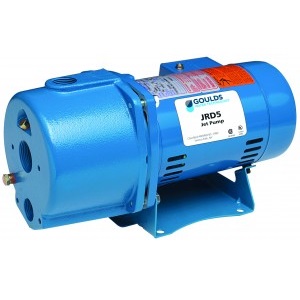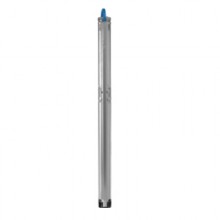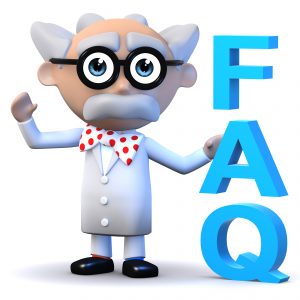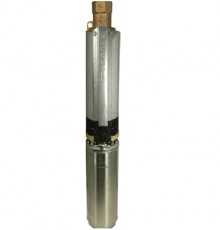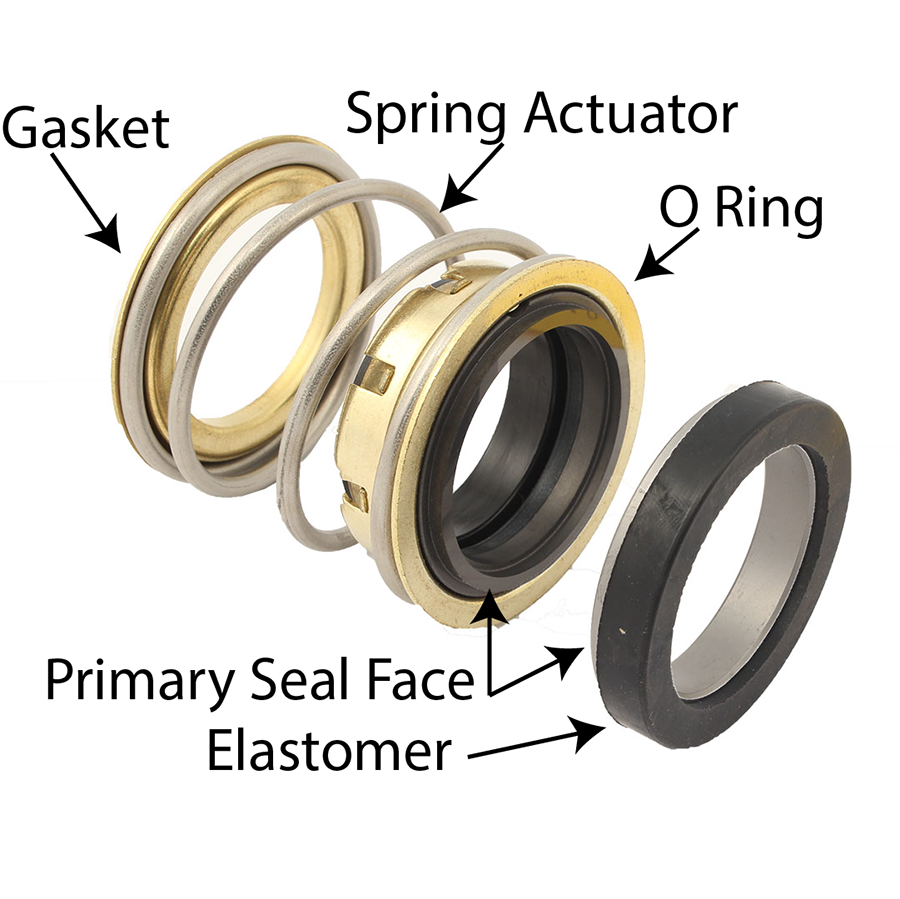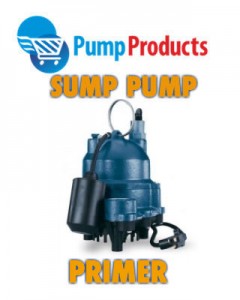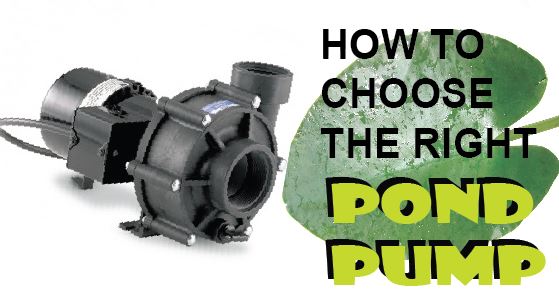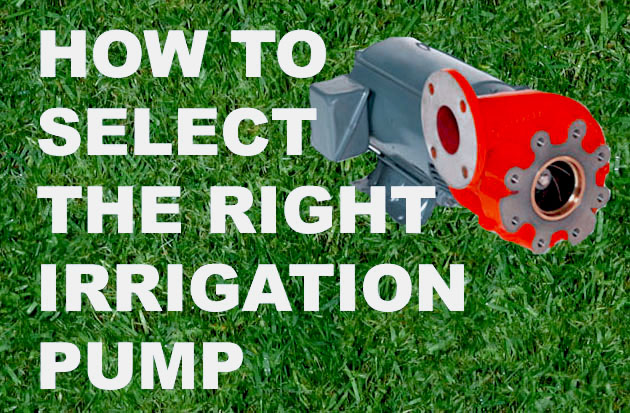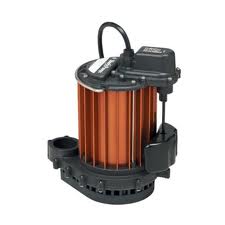-
What is a Jet Pump?
November 14, 2018Believe it or not, Jet Pumps are not associated with the awful New York football team. They are referred to as such because they work similarly to a jet engine in the way they create large amounts of pressure. Jet Pumps are mounted above ground and are non-submersible. They are typically used to draw water from a well through a suction pipe in order to provide potable water or domestic water pressure. Other common applications (though certainly not limited to) include light commercial or residential irrigation and supplying water for sprinkler systems. Jet Pumps are typically more popular in warmer climates or areas with high water tables. Jet pumps come in two variations: deep well and shallow well. The type of jet pump most suitable for your application will be dependent on the depth of your well. Shallow well jet pumps are used to transport water from wells as deep as 25 feet. Deep well jet pumps are generally used for depths up to about 200 feet. Deep well jet pumps can move larger volumes of water more quickly and over longer distances than shallow well pumps. Please note that altitude can affect the specific depth to which a pump can draw water from. Deep Well Pumps can also be referred to as convertible jet pumps. This means that the pump can be used in either shallow or deep wells. In a shallow well setup, an ejector kit (or jet kit) is built in or attached to the pump. For deep wells, the kit is placed down in the well. This ejector kit helps force water up from the bottom of the well. If you already have a jet pump and you are looking to determine whether it is a deep well or shallow well pump, look at how many pipes are between the pump and the water source. One pipe indicates a shallow well pump while two pipes indicate a deep well pump. It is important to keep in mind that jet pumps should never run dry. Running a pump dry may significantly and permanently damage the pump. These pumps need to be primed first before they are ready to draw water. In order to prime your jet pump, first make sure the electricity to your pump is off. Next remove the priming plug on the wet end of the pump (or the side opposite the motor). Then fill the priming vent with water until it reaches the top of the vent. The idea behind this is to remove all the air from the pump housing. After the pump is primed, your pump is ready to go and you can turn the electricity back on to the pump. If the pump does not pull water within five minutes you may need to re-prime the pump. Pump Products application engineers are standing by to help you find the right pump, as well as to provide price quotes, stocking availability and shipping information. Call our toll free number 1-800-429-0800 to speak to an expert today.
-
What are Well Pumps?
May 11, 2018Well pumps are used to deliver water from a well to a home that is not connected to a municipal water supply. They are also commonly used for small-scale irrigation and livestock watering. Well pumps are available in shallow, deep well convertible, and submersible designs. PumpProducts.com offers a large selection of top brand well pumps to suit every application. Pump Products' applications engineers are happy to work with customers to figure out the right pump for your application and budget. Call 1800-429-0800 to speak to an expert. Subscribe to our channel for more how-to guides, product highlights and general information about pumps.
-
Pump Products Now Carrying Grundfos SQ Series Submersible Well Pumps
November 7, 2017Pump Products is proud to announce that the company is now distributing a new product line from Grundfos Pumps, the Grundfos SQ series submersible well pumps. The introduction of the SQ series marks the expansion of a longstanding and fruitful partnership. Pump Products currently carries many other products and lines from Grundfos. The SQ series is an innovative, premium pump series specifically designed to simplify the installation process and improve the overall reliability of your well pump system. Each SQ pump includes several special features precision engineered by the Grundfos team to increase performance. These 3" submersible pumps can operate both continuously and intermittently for domestic water supply, light commercial water supply, irrigation and tank applications in 3" or larger diameter wells, SQ pumps come close coupled to an innovative motor design that uses permanent magnet technology and a Grundfos motor to electronically control the motor speed. This allows for several features such as constant pressure, control, soft-start and integrated dry-run protection. The smart motor communicated via a status box through the power leads so it is not required to run additional wires down the well. The motor design also protects against overvoltage, undervoltage and voltage fluctuation, ensuring a longer performance life. The motor is also uses a low amperage making it possible to connect more appliances to the same fuse group. The pump design features floating impellers that are not fashioned to the shaft for increased wear resistance and protection against upthrust. Overload protection and temperature protection are also included. All in all, Grundfos SQ series well pumps are an advanced high quality option for the discerning consumer. The quality performance, engineering and long life are sure to make this a popular well pump. "I don't think a lot of U.S. distributors carry this line, so we're really excited to have the opportunity," application engineer Nick said. "Grundfos makes a quality product so I'm sure our customers will be happy." Pump Products application engineers are standing by to help you find the right pump, as well as to provide price quotes, stocking availability and shipping information. Call our toll free number 1-800-429-0800 to speak to an expert today.
-
Inspector Pumphead’s FAQ: Well Pump Edition
May 23, 2017Welcome to Inspector Pumphead’s Frequently Asked Questions! I will be answering some of the most common questions we get on a specific topic. Some of this information may also be available elsewhere, but this feature will serve as a convenient one-stop source. In this edition, I'll talk about well pumps. Well Pump FAQ 1. Why are there two different types of well pumps listed What’s the difference between ‘jet’ and ‘submersible’ Jet well pumps are surface pumps configured above the well system, while a jet assembly system (twin pipe or Packer depending on the application) is inserted into the well shaft. The main components of a jet pump are a nozzle, venturi and the jet itself. The physics and mechanics of it are interesting, but we’ll focus on the basics here: these components work together to create a vacuum above the water, which allows atmospheric pressure underneath to push the water upwards. Jet pumps can be either horizontally or vertically configured and are much the same size and shape as other pumps. Submersible well pumps are actually installed and submerged under water at the base of the well. Whereas jet pumps use suction to pull water, submersible pumps create pressure to push the water in an upward direction. Submersible well pumps are cylindrical and “thin” in diameter so as to easily fit down a well shaft. They are often tall as well since submersible well pumps usually contain multiple stages stacked on top of each other. A stage is simply a compartment with an impeller, diffuser and upthrust washer that increases the pressure as water moves up through each stage. The more stages, the higher the head. 2. So which one is better As is always the case when it comes to pumps, the answer is “it depends on your system and application.” Submersible pumps are more efficient, especially in deeper wells. The farther the pump is away from the water table, the less effective it will be. Since submersible well pumps are closer to the source, they are more reliable. The downside to a submersible pump is that it must be pulled out for maintenance, repair or replacement. Being submerged also exposes the pump to contaminants such as sand. 3. What constitutes a ‘deep well’ or ‘shallow well’ The depth of the well refers specifically to the depth of the water table, which is the top of the reservoir. A water table 25 ft. or fewer underground, while any water table deeper than 25 ft. is considered a deep well. 4. What is a convertible jet pump A convertible jet pump is a pump that can be configured for either shallow well or deep well applications with the proper fittings. Convertible jet pumps are often built as deep well jet pumps and include a bolt on shallow well adapter. Deep well fittings, such as the jet assembly (twin pipe or Packer) are usually purchased separately. 5. Why would I need a convertible pump Shouldn’t I just get either a deep well or shallow well pump Usually you’d be able to stick with either one or the other type of jet well pump. In some areas, however, water tables may fluctuate due to the climate, unique elevation, topography changes or other factors. A convertible jet well pump ensures that you will be prepared and will continue to receive well water in such a case. Pump Products application engineers are standing by to help you find the right pump, as well as to provide price quotes, availability and shipping information. Call our toll free number 1-800-429-0800.
-
Pump Products Partners with A.Y. McDonald Mfg. Co.
May 2, 2017(A.Y. McDonald Submersible Well Pump) Pump Products is proud to announce its latest partnership with A.Y. McDonald Mfg. Co., a leading manufacturer of pumps, water systems and other plumbing supplies. A.Y. McDonald is known throughout the industry for quality-engineered products and reliable service that always puts the customers first. The mission statement of the company: “The mission of A.Y. McDonald Mfg. Co., in the words of our founder, is ‘to make good products and sell them honestly.’ We, the stockholders and employees, accomplish this by extending the McDonald family culture through excellent customer service and by focusing on our customers’ needs.” Pump Products currently carries A.Y. McDonald’s line of 4” submersible multi stage well pumps, including the K series, V series, M series, J series, L series and P series. Every pump in each series is constructed of no lead brass to ensure corrosion resistance and years of trouble free operation. The motors range from ⅓ HP to 5 HP and pump models with up to 35 stages are featured. Pumps feature either 2 or 3 wires. As of this writing, Pump Products sells A.Y. McDonald well pumps in three configurations: pump and motor, pump and motor with a control box and pump end only. For questions about A.Y. McDonald submersible well pumps or any other products, speak with an application engineer today by calling our toll-free number 1-800-429-0800.
-
How a Mechanical Seal Prevents Pump Leakage
August 31, 2016The mechanical seal is one of the most important components of a pumping system. As the name suggests, the seal is a simple component that forms a barrier between the motor and the volute of a pump, protecting the motor against leakage. Leakage is death to any mechanical instruments and pumps are no exception. Fluid leakage often results in corrosion of the casings, sleeves and bearings. Corrosion left unattended over a period of time will will degrade the construction material of the pump. Fluid leakage that enters the motor shaft can short circuit the motor. Naturally, these problems will impede proper pump functioning and eventually could stop the pump from running altogether. Companies often spend a lot in terms of money, wasted manpower and lost operational time to fix leakage.The mechanical seal is designed to prevent that leakage from ever happening. Mechanical seal shaft failure is the number one cause of pump downtime according to WaterWorld magazine. (more…)
-
How Fountain Pumps Power Artistic Water Displays
July 27, 2016From the public wishing fountains found in many city squares to the grand water shows in places like Las Vegas and Dubai, water fountain displays are aesthetic marvels that tend to draw large, admiring crowds. In the days of the ancient Romans, gravity-fed fountains served as an important source of bathing, washing and drinking water for the public. Today, sophisticated fountain pumps power water fountain displays. The Trevi Fountain in Rome is a prime example of how modern pumping technology has interacted with classical design to preserve an artifact of Post-Renaissance Rome. An icon of Baroque era architecture and a symbol of Roman mythology, the Trevi fountain is arguably the most famous fountain display in the world. Artisans refurbished the deteriorated surface and engineers installed recirculating pumps in 1998. The pumps ensure that the Trevi will continue to dazzle modern audiences for many years to come. (more…)
-
Pump Express Installs Shredder Pumps at Historic Ellis Island
November 20, 2014Shredder Pumps Installed at Historic Ellis Island BJM's SK Series Electric Submersible Pumps with Shredder Action gets antiquated system back on line after Hurricane Sandy and keeps busy tourist attraction up and running. The Facility Ellis Island, in the shadow of the Statue of Liberty, is one of America's most popular historic sites. The island is one of a number of small, naturally occurring islands in New York Harbor. Over many years, this island — which for millions of people represented the gateway to the New World — was enlarged from its original 3.3 acres to its current 27.5 acres by adding landfill from ships ballast and possibly excess earth from the construction of the New York City subway system. The island was not always a point of entry for immigrants or a tourist destination. By the time it was purchased in the 1770s by Samuel Ellis, it had served as a hanging site for pirates, a harbor fort, and an ammunition and ordinance depot. The US Government purchased the island from New York State in 1808. Just before the War of 1812 broke out a series of structures were erected that served as a defense system for New York Harbor. Ellis Island was approved as a site for fortifications and on it was constructed a parapet of three tiers of circular guns. In January 1892 Ellis Island was opened as an immigration station. Over the next 62 years more than 12 million immigrants were processed at the site. After World War I immigrants applied for visas at American consulates in their country of origin, and the only immigrants passing through Ellis Island were those who had problems with their paperwork, war refugees and displaced people. Ellis Island was officially closed as an immigration station in 1954. In 1965 President Lyndon Johnson declared Ellis Island part of the Statue of Liberty National Monument, and in 1984 Ellis Island underwent a major restoration—the largest historic restoration in U.S. history. In recent years the island has become one of the most popular tourist destinations in the National Park Service. That means a lot of visitors and the need for well working infrastructure. On October 28, 2012, Hurricane Sandy swept over Ellis Island, Liberty Island, and much of the East Coast. The Ellis Island Immigration Museum reopened on a limited basis one year later, but repairs to the buildings and infrastructure would continue for many months. The Challenge Although the damage to Ellis Island was extensive, the island's antiquated sewage system was fraught with problems long before Hurricane Sandy came ashore. New Jersey-based Pump Express Services had been providing maintenance to the island's sewage ejector system for a couple of years before Sandy hit. According to Pump Express [and Pump Products] sales manager Fred Hettinger, in the two years before Sandy they were called to the island numerous times in response to high water alarms, clogging and ultimately a failed pump. "They had a two-pump system and when one pump failed they let the system run on the other," Hettinger said. Then, the second pump failed "and they had nothing." Hettinger explained that a significant problem was that the old pumps were a simple ejector type and didn't break down solids. But along with the sewage flow on the island there was also a significant amount of debris—with synthetic fibers being particularly problematic—that routinely clogged the system. Left with only minimal sewage disposal, and faced with a grand reopening to the public targeted for July 4th, 2013, the island's maintenance engineers reached out again to Pump Express Services—this time for a more permanent solution. The Solution "We submitted a proposal to replace the old pump system with a pair of 15 horsepower BJM shredders," Hettinger said. "We've been using BJM shredders for four or five years now and everything we've been able to throw at them they've been able to handle." In April 2013 Pump Express installed a pair of 900-pound SK Series shredder pumps into the revamped Ellis Island system. The pumps can handle 845 gpm of wastewater at heads of up to 94 feet. The SK Series pumps were chosen specifically because they are designed to shred solids before passing the liquid. The shredder pumps leave solids slightly larger than if they were passed through a grinder pump. The shredding action is produced through use of a unique FangTM non-clog cutting impeller with tungsten carbide vane tips against a high-chrome "tooth shaped" diffuser plate. The cutting tips shred solids against the pump suction plate, continuously ripping the solids apart with 360o shredding action. The SK Series shredder pump works on many objects that would clog an ordinary pump. Other quality features built into the SK Series pumps that supported their recommendation for the Ellis Island installation include the following: The 304 stainless steel motor housing helps protect the pumps from abrasion and premature wear caused by the harsh saltwater environment. The motor is protected by double mechanical seals. The lower seal is made of silicon carbide/silicon carbide and the upper seal is made of carbon/ceramic. In addition, a lip seal has been installed above the impeller that helps prevent abrasives, such as sand, from entering the seal chamber. Winding protection and NEMA Class F motor insulation allow the motor temperature to rise to 230oF. An automatic switch turns the pump motor off if the temperature and/or amp draw gets too high. When the motor cools the switch will automatically reset and the pump will restart. A hardened cast iron exterior stands up to rough handling and pumping of sandy water unlike pumps with soft resin impellers or plastic exterior components. (Specifications may differ between models.) The Conclusion About six months after installation a team from Pump Express went back to Ellis Island to make sure the new pumps were performing as anticipated. "We're now going on a year and a half and haven't had any issues," Hettinger said. That's a vast improvement over the previous average of a visit every six months. "I bet in the last 18 months if we had had to go out there three more times it would have cost them half of what the upgrade cost them," he added. Pump Products currently stocks the Following BJM pumps: Dewatering Pumps High Temp Pumps Marine Pumps Shredder Pumps Solids Handling Pumps For more information on BJM residential and commercial pumping equipment, visit Pump Products at www.pumpproducts.com or call 1-800-429-0800 Also, check out our service department by visiting Pump Express Services or call 1-800-620-7331 Read Original Article At: BJMPUMPS.COM Download The Original Article. Download PDF
-
The Pump Products Sump Pump Primer
July 14, 2014Sump pumps generally sit in the lowest part of a basement sump pit and pump rainwater, snowmelt or appliance runoff away from a house and keep the basement dry. A small amount of water can cause thousands of dollars of damage and an effective sump pump system is one of the most important ways to protect a home. The size of a sump pit will determine the sump pump that's best suited for it so if you're installing a sump pit for the first time, install a large one. A small pit will accommodate a small pump that will have to run more often and will generally have a motor that runs hotter and have a shorter life. (more…)
-
Pond Pump Buyers Guide
October 5, 2013A properly sized pump will ensure the well-being of a pond’s aquatic life, optimize its beauty and keep utility costs down. The first thing to consider when selecting a pond pump is whether it will be used primarily for a waterfall, fountain display or for filtration and recirculation. Fish pond pumps are often required to perform at a higher capacity than fountain pumps while waterfall pumps must be sized according to both pumping capacity and waterfall height. View our pond pump video Video used courtesy of Living Water Aeration Selecting the Right Pond Pump Because all pond pumps are sized in gallons per hour (GPH), knowing the volume of water in your pond is key to ensuring adequate circulation. Insufficient circulation can result in stagnant water and an environment unable to sustain fish and plants. As a general rule, pond water should be circulated about once every hour. Consequently, a pond containing 500 gallons requires a pump rated at a minimum of 500 GPH. Total pond gallons can be determined by connecting a water meter to a garden hose while initially filling the pond. To calculate the approximate volume, multiply the pond’s length in feet x width in feet x depth in feet x 7.5. In addition to circulating water, pond pumps are often required to lift water. Head height is the vertical distance the pump must raise water above the surface of the pond. The greater the head height, the harder your pump will have to work. To determine your head height, calculate the following: A = The vertical height from the top of your pump to the top of your water stream. B = Total feet of tubing connecting the top of the water stream to the water filter. C = Number of 90 degree bends and reducers. D = Number of filters and miscellaneous adapters you will be pumping water through. (Both C & D put additional pressure on the pump.) Plug your pond’s coordinates into the following formula: A + (B / 10) + (C / 2) + (D / 4) = Approximate Head Pressure For Example: A = Vertical Height = 4’ B = Total Distance = 8’ C = Number of 90 degree bends and reducers = 2 D = Number of misc. adaptors = 6 4 + (8 / 10) + (2 / 2) + (6 / 4) = 7.3 Total Dynamic Head Pressure Most pumps are sold with flow charts illustrating how they perform across a range of measures. Other factors to consider when choosing a pond pump include. Width of Spillway: In waterfall applications, 1 inch = 125 GPH. Fish Load: In fish pond applications, maximum fish load is approximately five inches of fish per five gallons of pond water. Voltage /Energy Consumption: Because pond pumps are designed to run constantly, every watt will add substantially to utility costs. POND PUMP TYPES Magnetic Drive Pumps are the most energy efficient pond pumps and, though costlier than direct drive models, they quickly pay for themselves in utility cost savings. Magnetic drive pumps are oil-free and therefore safe for ponds stocked with fish. They are not ideal for high head applications due to their limited ability to push water to significant heights. Direct Drive Pumps are better-suited for powering water features with high head height. These motor-driven pumps tend to cost less than their mag-drive counterparts but require a substantial amount of energy to operate. Unlike mag-drives, direct drive pumps are often self-priming and will draw water to them. Submersible Pumps are designed to run while quietly submerged in a pond. Their unobtrusiveness lends itself to naturalistic settings. Maintenance, however, can be inconvenient as submersible pumps must be periodically pulled from the water and cleared of debris. External Pumps require less maintenance than submersible pumps and tend to have a longer life. They are often loud and have to be camouflaged but require less energy than submersible pumps, particularly in larger applications. A 6000 GPH external pump can run on 450 watts, where as a standard submersible pump generally requires 750 – 1200 watts. TIPS When shopping for a pond pump for a stream or waterfall, bigger is better. Make sure its head capacity, or lift, is well above the height you've planned for your falls. Check the pump cord length. Some codes require the electrical outlet for a water feature to be at least 6 feet away from water. Consider purchasing two pumps at once. An extra pump could save your pond if your existing pump should fail. For detailed specs, manuals and reviews of the pond pumps we stock and ship nationally, visit our product pages at www.pumpproducts.com or call us for details: 1-800-429-0800.
-
Irrigation Pump Buyers Guide
February 12, 2013Irrigation pumps are manufactured in a wide range of designs including centrifugal, submersible, jet and propeller models. They are used in domestic lawn sprinkling and water boosting applications as well as in large-scale agriculture and fire prevention. Irrigation pumps can draw on a municipal water supply or natural source such as a lake or pond and are available in electric or gas-fueled models. View our Irrigation Pump Video Video courtesy of learnengineering.org Choosing the Right Irrigation Pump Properly sizing an irrigation pump involves measuring your water source pressure (psi) against the flow (gph) and pressure (feet of head) requirements of your watering system and selecting the pump that will most efficiently connect the former to the latter. There are a number of on-line tutorials available to those interested in designing a basic irrigation system that is compatible with local water resources. Professional irrigation services are an option for applications with complex requirements. When it comes to selecting the pump at the center of the equation, pump curves are a good place to start. Pump curves are issued by pump manufacturers to illustrate a pump’s performance over a range of pressures and flows in feet of head and psi. The shape of a pump curve varies according a pump’s design. Pump efficiency is maximal at a particular combination of discharge and head and then drops below the maximum as the discharge rate increases. The objective is to select the pump with highest efficiency at the flow rate and pressure conditions required by your system. As a general rule, pumps with electric motors are driven at either 1750 or 3500 rpm (½ to 2 hp). Models driven at 1750 rpm are capable of lower head but higher discharge than those driven at 3500 rpm. IRRIGATION PUMP TYPES Centrifugal Pumps are commonly used for domestic irrigation because they can draw on water sources ranging from a municipal water supply to a creek and can deliver constant flow rates under a wide range of conditions. They move water through suction force generated by a rapidly spinning impeller and must be filled with water to remove air, or primed, in order to operate. The above video provides a detailed explanation of how a centifugal irrigation pump operates. Submersible Pumps operate underwater, often pushing water up from inside a well, and are commonly used in pressure boosting applications. What they lack in versatility they make up for in efficiency. Submersible pumps do not need to be primed and run quietly. Jet Pumps are terrestrial pumps with submersible components that make them ideal for applications with fluctuating water levels. A jet pump operates by directing water down an intake to cause water lift. Jet pumps do not need to be primed. Propeller Pumps use a propeller to move large amounts of water at low heads. Propeller pumps are among the smallest irrigation pumps. FEATURES Self Priming pumps don't require manual priming, which often involves pouring buckets of water down into the pump and pipe which can be a slow and messy process. A Flow Switch can be used with a booster pump to activate the pump and bring pressure up to an acceptable level when low water flow is detected in the pipes. A Timer makes it possible to save money by automatically watering a lawn during off-peak hours. They can also be set to operate when you're at work or away on vacation. A Pressure Switch helps to maintain a pump’s peak efficiency by turning it on when pressure in pipes is too low and turning it off when pressure is too high. Corrosion Resistance helps to ensure that pumps continue to function properly long after they are installed. This is an important feature in submersible pumps. For detailed specs, manuals and reviews on the irrigation pumps we stock and ship nationally, visit our irrigation pump product pages or call us for details: 1-800-429-0800.
-
Sump Pump Buyers Guide
February 8, 2013A sump pump is like an old friend you don’t see often but who’s always ready to bail you out of a jam. Sump pumps operate in basement sump pits where rain and groundwater collect during storms. Their job is to pump water out (usually to a drainage area located at least 20 feet away) and keep building interiors dry. If you find yourself in a flood-prone area in the middle of a storm, the right sump pump can be the best friend you have. View our sump pump video Choosing the Right Sump Pump: Submersible vs. Pedestal Sump pumps are available in submersible and pedestal designs. In general, the size of a sump pit will determine the configuration that's best for it. Submersible pumps are placed in large sump pits and can operate submerged in water. Their motors are moisture sealed and encased within the pump body. They are self-cooling and run more quietly than pedestal pumps. Pedestal pumps have external motors that run outside of a sump pit while the pump drains water below. They require less space than submersible models but can also be less efficient in pumping water with suspended solids. HOW TO SIZE A SUMP PUMP To determine the horsepower of the pump you need, drop a tape measure in your sump pit during the next rain storm and measure the amount of water that accumulates in one minute. One inch of water in one minute is roughly equivalent to one gallon in a standard 18" pit. In a pit that's 24" in diameter, the volume doubles. Multiply by 60 to determine the number of gallons your pump will have to move per hour. Sump pump strength is measured in horsepower. 1/3 horsepower is sufficient for most homes but may fall short in extreme conditions. Homeowners in areas prone to flooding might consider a pump with a more powerful 1/2 horsepower motor, bearing in mind that larger pumps cost more and wear out sooner than small ones. PUMP TYPES, POWER SOURCES Once you determine the type and capacity of the sump pump you need, consider your energy source. Electrically Powered Most primary sump pumps are electrically powered. Unfortunately, an electrically powered sump pump will stop working if the power goes out during a storm. Battery Back-Up Power A battery back-up pump will kick in if the primary pump stops working due to power failure or breakdown. Just as a primary sump pump will not run without power, a battery-operated unit will not operate without a battery. Some battery back-up pumps run on deep-cycle maintenance-free marine batteries while others run on traditional acid batteries. These require the occasional addition of water. Combination Systems By bundling an electrical primary pump with a battery back –up unit, combination systems provide all-around flood protection. If the power goes down, or the primary pump is overwhelmed, the backup sump pump will begin pumping automatically. Water Powered Because they don’t run on electricity or batteries, water powered pumps are maintenance-free. However, they are only appropriate for homes with a consistent (40-100psi) municipal water supply and should not be used with electrically powered well water systems or to substitute a primary basement sump pump system. Oil-Detecting Systems are electrically powered pumps used primarily in elevator pits and transformer vaults. They are designed to differentiate between oil and water, pumping only water and leaving oil out of discharge for safe draining. SPECIAL FEATURES Sump pumps are manufactured in materials ranging from durable cast iron to corrosion-resistant thermoplastic. They are also available with a variety of useful features. Alarms are designed to sound an alert when water reaches a problematic level or a pump stops working. Float Switches activate a pump when water reaches a pre-determined level. They are available in vertical, tethered and pressure varieties. Silent Check Valves eliminate the noise that results when a sump pump shuts off and the check valve closes. They are sometimes referred to as klunkless valves. For detailed specs, manuals and reviews on the sumps pumps, battery back-up systems, combinations systems and water powered systems we stock and ship nationally, visit our product pages at www.pumpproducts.com or call us for details: 1-800-429-0800.


